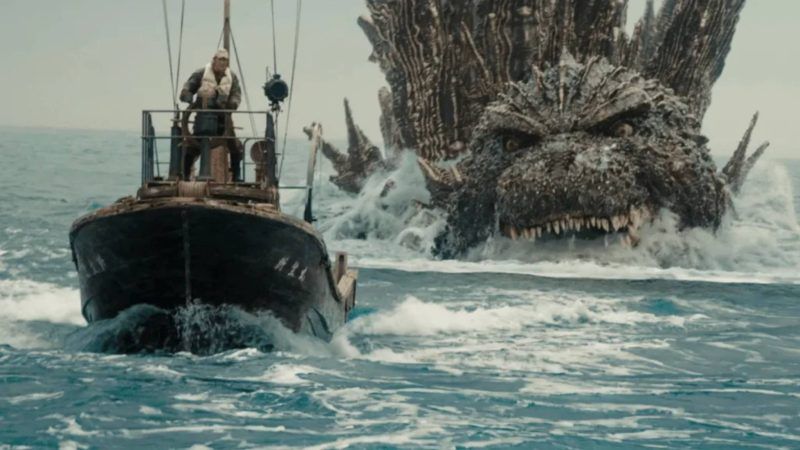In Godzilla Minus One, Government Won't Save Anyone When the Crisis Comes
To fight the King of the Monsters, private citizens must band together.

From its very first appearance in 1954, Godzilla, the hulking, fire-breathing, skyscraper-sized monster, has represented national trauma. In his earliest incarnations, he was an avatar of nuclear destruction, stomping and smashing his fat legs through Japan's urban landscapes. A man in an awkward lizard suit became the embodiment of a wounded country's lingering psychic pain.
In the decades since, Godzilla has become a sillier figure, pitted against various other goofy-looking giant monsters, and refashioned, at times, as a hero, defending little people from even worse threats. Some incarnations—particularly Gareth Edwards' 2014 big-budget Hollywood blockbuster Godzilla—have tried to return to the awe-struck terror of the original. But the sequels have been romps, playfully ridiculous in tone and bordering on camp.
Godzilla Minus One, the new film from longtime Japanese monster movie producer Toho, finds its way back to the soul of the original, casting the lizard monster as an all-encompassing national emergency, part natural disaster, part infrastructure collapse, part foreign attack. And in this version, world governments are either powerless or checked out for political reasons. It's a movie about how when a crisis comes, the authorities won't save anyone—leaving private citizens to stand up for themselves.
The movie is set in the aftermath of World War II, in a Japan defeated militarily and in spirit. At the center of the story is guilt-wracked kamikaze pilot Koichi Shikishima, who faked mechanical issues with his plane in order to avoid having to execute a suicide attack. Shikishima has seen Godzilla once before, trampling an island at the end of the war, but now he's back home, trying to rebuild his life in a war-wrecked city.
Inevitably, Godzilla looms just outside the frame. The monster has grown in size thanks to American nuclear tests, and when it finally arrives in mainland Japan, mid-movie, the destruction it causes is devastating. Ports and cities are demolished, and tens of thousands of lives are lost.
But the post-war government, which has been defanged by its losses, won't do anything to prevent another attack. And the U.S. military won't step in either, for political reasons having to do with rising Soviet tensions.
And thus, defense of the homeland falls to private citizens. Much of the movie's third quarter is designed as a sort of "explain the third-act plan" sequence of the type often found in action-heavy blockbusters. Think, for example, of the scene in Star Wars where the rebels gather to plan the trench-run attack on the Death Star.
But in this version, much of the sequence involves convincing private citizens, mostly ex-naval servicemen, to join the effort, embracing a plan in which they might lose their lives, even after surviving the war. The conversation dwells on the ways the Japanese government failed its citizens and soldiers throughout the war, sending them into battle unprepared and letting supply lines run empty. And now, in a crisis that rivals the war, it is refusing to step in. The assembled men hem and haw, but ultimately agree: the plan to stop the monster must be private, organized and executed by those whose lives are actually under threat. There is no one else they can count on but themselves.
What follows is a rousing monster takedown finale with clear echoes of Star Wars, Independence Day, and—most of all—Jaws. It's not too much of a spoiler to say that Shikishima, the guilt-wracked kamikaze pilot, finds the will to live by embracing the idea that he's in control of his own life and providing something of value to his community, in direct contrast to the pointless suicidal sacrifice demanded by the wartime government. The movie's big idea is that life is worth living for yourself, your loved ones, and your community, that you have to find your own purpose and make your own way in the world, because when everything goes to hell, the authorities won't be there to save you.
Or at least, that's one of its big ideas. The other is that nearly 70 years later, Godzilla still rules. The lumbering lizard kaiju is still a symbol of national psychic trauma—but learning to conquer your demons and fight him off can be the path to rebirth.
Show Comments (25)